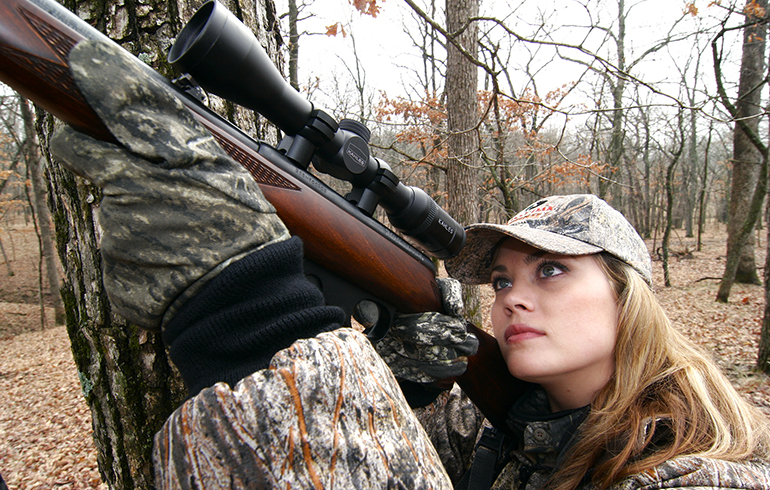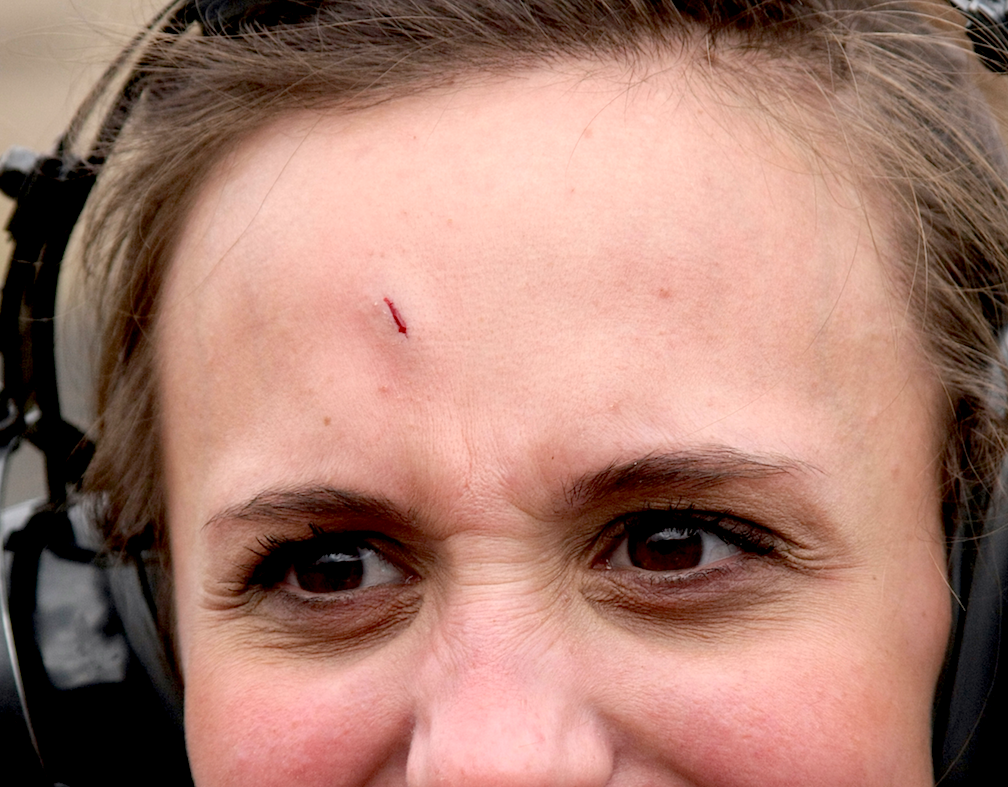Say It Ain’t So – Scope Brow…And How To Prevent It
Shooters and hunters often fall prey to their scopes. Bang, whack, ouch. And the blood flows. Sir Isaac Newton explained how this happens: For every action there is an opposite and equal reaction.
When this lesson is delivered by a recoiling scope hitting your brow, you tend to remember it. But how can you prevent relearning it, again and again?

First, try to buy scopes with long eye relief. Eye relief is the distance between the eyepiece lens and your eyeball at which you see the full view without edge blackout.
This is preset in the scope and can’t be adjusted. Some scopes have more than 4 inches of eye relief, some less than 3 inches. More is better. Here’s why.

- Some scopes include a significant rim of eyepiece hood or barrel around the glass eyepiece lens itself. This protruding metal hood is what cuts your brow, so you should factor it into actual eye relief. Some people’s brows jut a lot farther beyond their eyes than others do, too. Your eye might be 3 inches from the eyepiece glass, but your brow could be only 2.5 inches from that sharp barrel. You can measure this with a standard ruler while aiming your rifle. Get the full sight picture, then measure the distance from the end of the eyepiece hood and your brow. That’s the REAL distance you want to worry about. It should exceed 3 inches, and with big kicking rifles, 4 is better.
- Some scopes include a protective rubber cover over the eyepiece hood. These help, but not much. Look for them, but don’t depend on them to fully protect you.
- The harder your rifle or shotgun kicks, the more chance your eye will eventually meet your scope. To forestall this, mount that scope as far forward as you can while still seeing a full view. Simultaneously, be aware of any tendency to “creep” the stock. This means you push your head forward as you aim, crawling ever closer to that scope. This forward creeping tends to increase with excitement, like seeing a big buck or bull under the crosshair. It also increases if you lie prone to shoot and if you shoot at a steep upward angle.
- Because it’s hard to control your excitement in the heat of the moment, you’re wise to buy a scope with plenty of eye relief, especially if you’re shooting a .30-06 Springfield, 12 gauge slug gun or even harder kicking firearm. The lighter the weight of any gun, the more it will recoil, so take that into account. Generally anything in the .243 Winchester class won’t be much of a “scope brow” threat, but light rifles in .270 Winchester and up could.
- Eye relief correlates negatively with field of view. In any scope, you gain field of view by sacrificing eye relief. (It’s like looking through a keyhole. The closer you put your eye to the hole, the more you see on the other side of it.) Beware scopes that brag about wide field of view. They’ve probably sacrificed eye relief to get it.
- Most variable power scopes change eye relief as you zoom. You might get 4 inches of eye relief at 2X, but only 3 inches at 10X.
With all the hype about light transmission, turret dialing, multiple reticles and parallax knobs, eye relief might seem insignificant — until you get bashed in the brow. Then it’s a big deal. So pay attention early and avoid bloody scope eye.

Winchester Ammunition
A world leader in delivering innovative products, Winchester is The American Legend, a brand built on integrity, hard work, and a deep focus on its loyal customers.



